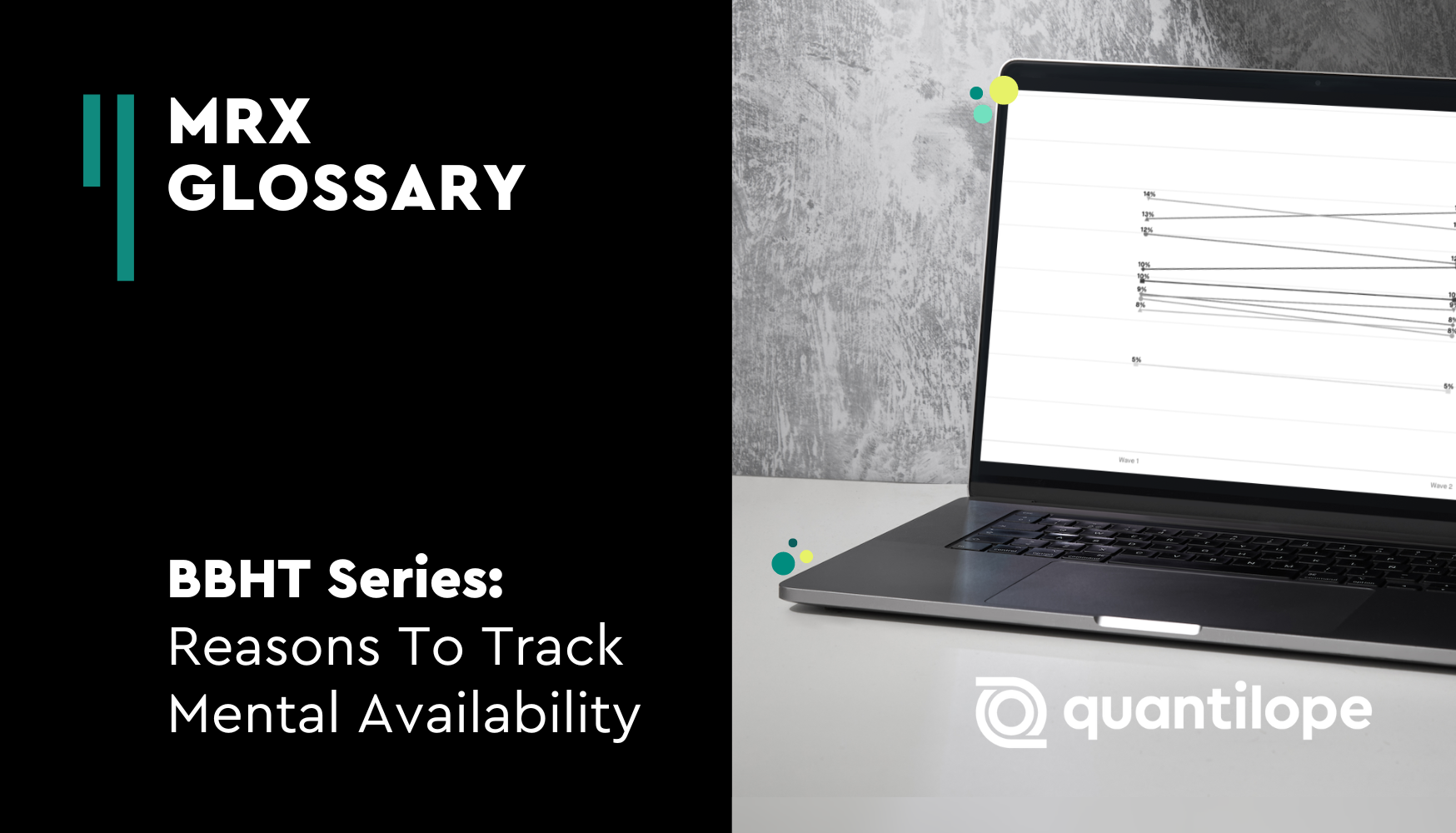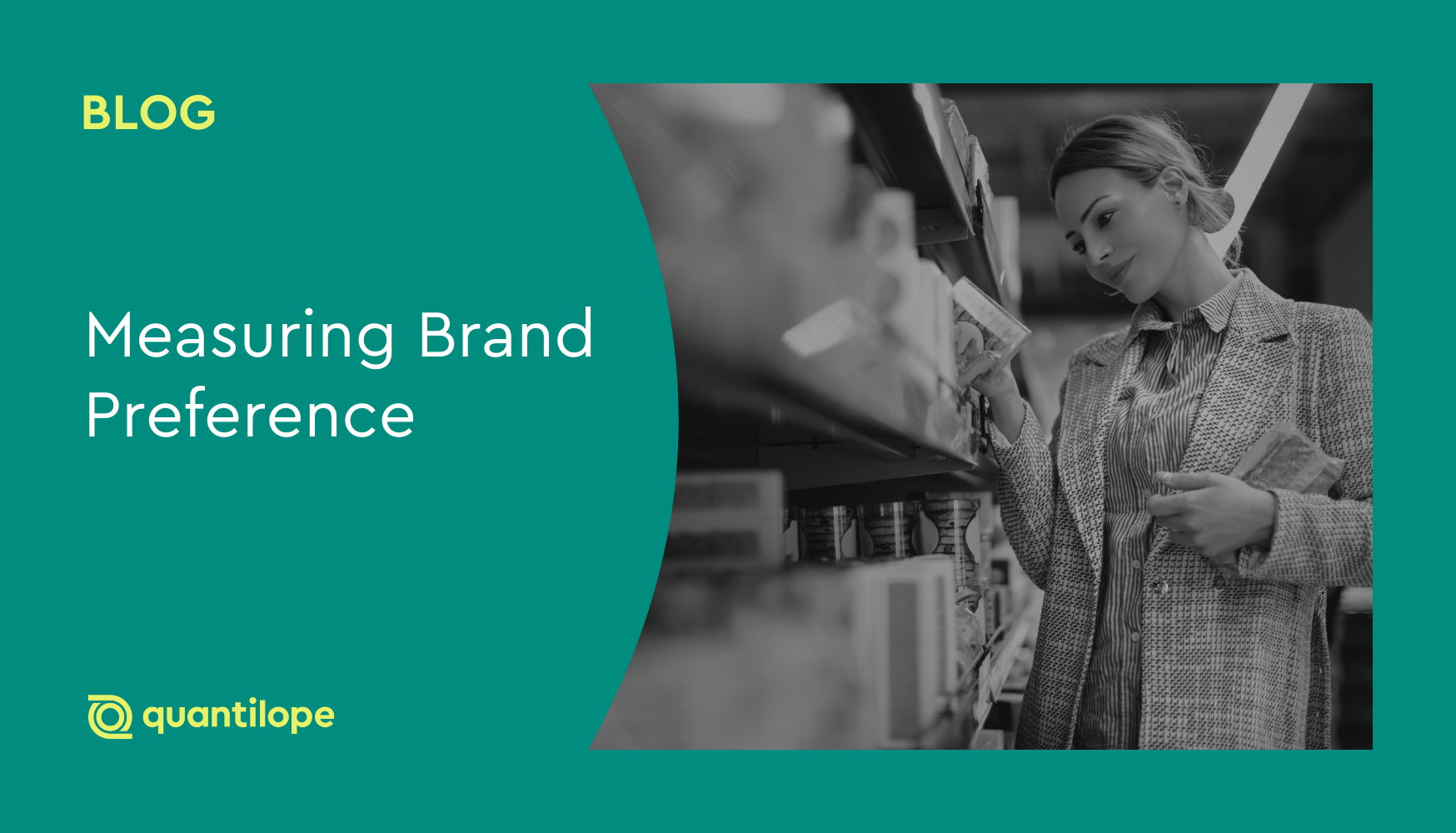In this Better Brand Health Tracking blog series post, we highlight the reasons you should care about this modernized approach to traditional brand health tracking. And if you haven’t read the earlier series’ posts, check those out first!
General brand health tracking has been around for decades, and not much has changed about it despite a rapidly-changing consumer market. While traditional brand health trackers leveraging the brand funnel are still a great asset to market research, they’re missing key insights that make trackers all the more actionable for brands. quantilope’s templated, modernized approach to tracking includes Category Entry Points and Mental Availability analysis, both of which are pivotal to better brand health insights.
Category Entry Points allow brands to know all the situations in which a consumer might think of buying their type of product/service (rather than simply capturing basic usage or consideration metrics). Knowing these situations means a brand can craft its marketing or product development strategy around those specific entry points, increasing the chance that consumers will consider their brand when shopping for the category. CEPs are a way for brands to broaden their thinking - capturing all the different avenues a consumer might take to end up thinking about their category (i.e. having a friend over for dinner OR celebrating a birthday OR making a dinner recipe could all be reasons someone goes out to buy wine, instead of just ‘craving a glass of wine’... though that could be one CEP as well!).
To put the importance of CEPs another way, think about whether or not your brand operates in more than one category (as many do). If you’re a brand like Samsung which operates in the handheld technology space AND home appliances space AND home theater space, you’ll want to make sure you’re accounting for all these different entry points. You want to know what makes consumers think about buying a new Samsung dishwasher just as much as you want to understand why someone would buy a new Samsung TV or smartphone; CEPs allow brands to do just that. Instead of asking consumers if they’re aware of Samsung (and not knowing if their awareness is linked to appliances or electronics), CEPs put brands into the minds of consumers from the moment they start to think about the category. These are the scenarios where brands need to establish real estate in consumers' minds so they form strong mental connections and memories...which becomes Mental Availability.
Mental Availability analysis is an advanced method that highlights two key audiences that traditional trackers often don’t: non-buyers and brand rejectors. One oversight many brands make in their brand tracking studies is focusing on who their current brand buyers are. While this is important to know, market research studies show that the biggest shifts in brand growth come from non-buyers gaining interest in your products/services. With quantilope’s new approach, based on the acclaimed work of Professor Jenni Romaniuk of the Ehrenberg-Bass Institute of Marketing Science (author of Better Brand Health and co-author of How Brands Grow), you can easily visualize (in pre-templated charts) how big your current network size is and which types of consumers make up non-category buyers; this becomes your new target audience to go after when focusing on brand growth. Similarly, you can explore why certain consumers are brand rejectors - ones that would never consider buying your brand. Knowing these types of insights is just as (and sometimes more) important as knowing who’s currently buying your products/services. Once someone becomes a buyer of your brand, they tend to remain sticky customers unless the brand undergoes a major shift.
In the next and final BBHT series post, we dive into Mental Advantage analysis - another type of advanced method that lets brands learn where they should defend, grow, and maintain certain associations.
If you’re looking for more information on how quantilope’s Better Brand Health Tracking solution would fit into your business needs, get in touch with our team below and let’s chat!




